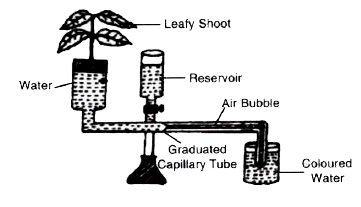Given below is a schematic diagram showing Mendel's Experiment on sweet pea plants having axial flowers with round seeds (AARR) and Terminal flowers with wrinkled seeds (aarr). Study the same and answer the questions that follow :

Give the phenotypic ratio of F2 progeny.
Step by step video solution for Given below is a schematic diagram showing Mendel's Experiment on sweet pea plants having axial flowers with round seeds (AARR) and Terminal flowers with wrinkled seeds (aarr). Study the same and answer the questions that follow : Give the phenotypic ratio of F_2 progeny. by Biology experts to help you in doubts & scoring excellent marks in Class 10 exams.
Updated on:21/07/2023Topper's Solved these Questions
- SELF ASSESSMENT PAPER 5BOOK - ICSECHAPTER - SELF ASSESSMENT PAPER 5EXERCISE - SECTION - II
76 Videos
- SELF ASSESSMENT PAPER 4BOOK - ICSECHAPTER - SELF ASSESSMENT PAPER 4EXERCISE - SECTION - II
57 Videos
- SENSE ORGANS BOOK - ICSECHAPTER - SENSE ORGANS EXERCISE - REVIEW QESTIONS (Choose the correct answer:)
4 Videos
Similar Questions
Given below is a schematic diagram showing Mendel's Experiment on sweet pea plants having axial flowers with round seeds (AARR) and Terminal flowers with wrinkled seeds (aarr). Study the same and answer the questions that follow :

Give the phenotype of F1 progeny.
View SolutionGiven below is a schematic diagram showing Mendel's Experiment on sweet pea plants having axial flowers with round seeds (AARR) and Terminal flowers with wrinkled seeds (aarr). Study the same and answer the questions that follow :

Give the phenotypes of F2 progeny produced upon by the self pollination of F1 progeny.
View SolutionGiven below is a schematic diagram showing Mendel's Experiment on sweet pea plants having axial flowers with round seeds (AARR) and Terminal flowers with wrinkled seeds (aarr). Study the same and answer the questions that follow :

Name and explain the law induced by Mendel on the basis of the above observation.
View SolutionStudy the diagram given below and answer the questions that follow:

Which part of it give rise to the root of the plant?
View SolutionThe diagram of an apparatus given below demonstrates a particular process in plants. Study the same and answer the questions that follow :

Name the apparatus.
View SolutionGiven below is an experimental setup to demonstrate a particular tropic movement in germinating seeds. Study the diagram and answer the questions that follow :

What is Thigmotropism 2 Give one example,
View SolutionThe diagram given below represents a stage during cell division. Study the same and then answer the questions that follow :

Name the parts labelled 1, 2 and 3.
View SolutionThe diagram given below represents the human heart in one phase of its functional activities. Study the same and answer the questions that follow :

Label the parts 1, 2 and 3.
View SolutionGiven below is an experimental setup to demonstrate a particular tropic movement in germinating seeds. Study the diagram and answer the questions that follow :

Label the parts 1 and 2.
View SolutionGiven below is the diagram of an experimental set-up to study the process of transpiration in plants. Study the same and then answer the questions that follow :

Define the term 'transpiration'.
View Solution
